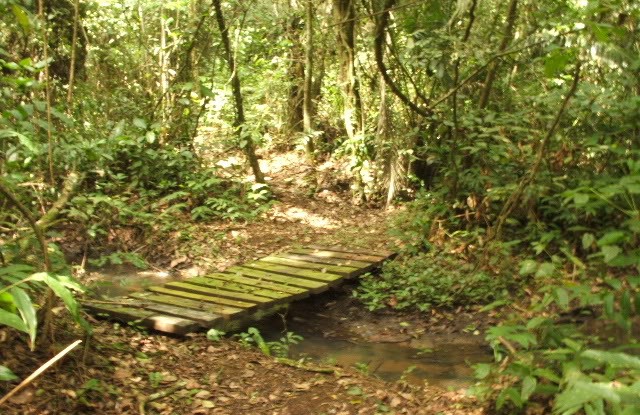A few kilometers north-east of Lake George, the Mpanga River rushes along a steep rocky valley that drops down the rift valley’s eastern escarpment to the lake. It is a stunning location. The approach provides marvelous views across Lake George and the soggy plains of northern Queen Elizabeth National Park (QENP) towards the Rwenzori, while in the valley itself the river rushes through a rocky chasm containing exotic-looking spray forest and the 50m Mpanga Fall.
This gorge has a rare resident. Encephalartos whitelockii is a species of cycad, the most ancient of trees. A primitive vascular plant, cycads flourished 200-300 million years ago and, like crocodiles, are considered ‘living fossils,’ survivors of the Age of Dinosaurs. When early crocodiles basked beside tropical lakes and rivers, cycads dominated the steamy ‘Jurassic Park’ shoreline vegetation. Cycads have remained virtually unchanged for 240 million years (hence ‘living fossils’) during which time competition from more advanced plants has reduced them to relict colonies. Befitting its status as a prehistoric prototype, Encephalartos whitelockii is an odd looking plant resembling a spiky tree fern stuck onto a gnarled palm trunk and decorated when in fruit by giant pineapples (actually cones) up to 45cm long
‘Here the mists and vapours hung and the trees dripped with continu-ous moisture. Even:, class of Fern -from the tree fern to the moss fern -was to be found beneath the mois¬ture-laden trees, whose limbs were clothed with them, and with mosses and long bearded lichen and orchids. The flowers familiar in our hot houses grew in these perpetual shades and gorgeous butterflies glanced like meteors through the for¬est twilight. 15elow foamed and ed¬died a seething torrent of water, con-fined between its rocky walls…’
EWhitelockii lives only in Mpanga Gorge and is classified as Critically Endangered. Australian cycad expert Peter Heidblom believes that Mpanga contains ‘probably the largest cycad colony in the world, and the botanical equivalent of the Bengal Tiger or Giant Panda’ – or indeed Uganda’s own Mountain Gorillas. Heidblom compares Mpanga favorably with the Mojaji cycad reserve in South Africa which though world famous, has far fewer plants.
Frederick Lugard provided the first description of Mpanga Gorge in 1891. He arrived in the wet season and some ingenious tree-trunk engineering was necessary for his 400-strong party to bridge the torrent with 13001b of ivory and 150 loads of Katwe salt. If you visit the gorge, you’ll appreciate the effort involved! After all had safely crossed, the usually pragmatic Lugard waxed uncommonly lyrical in his journal.
Getting to Mpanga Gorge
Mpanga Gorge lies in the remotest comer QENP. UWA intends to establish a boat trip across Lake George from Kyambura Wildlife Reset-ye to the Mpanga estuary for the hike to the gorge. In the meantime, it can be reached from Kamwenge -town which can be approached either from Fort Portal (about 1.5 hours drive on 70km of murrain) or Mbarara via lbancia 000km, including 60km of tarmac).
The north side of the gorge i5 another 22km out of Kamwenye. From the roundabout in the middle of the town, head 3/4km south along the Mbarara road then turn right on the Mbarara road the turn right on the hill top.
Drive past the District HQ and take the left fork in each village. The Falls are only visible within the national park so you should report -to the OENP Dura sector office in Kebuko village (18km from the main road) to pay the park entrance Fee and obtain a ranger guide (a) to guide you along the last 4km of the route which is unclear and (b) to take you into the national park. Until gorge accommodation is developed, you may prefer to visit Mpanga as a day trip from



